Estimated reading time: 7 minutes
Imagine this: your walls have become your cat’s favorite canvas, and their claws are the paintbrush. You might find yourself asking, “What’s going on here?” Well, cats scratch for reasons that are important to them, even if it means your beautiful walls pay the price.
Stick around as we uncover the secrets behind your cat’s urge to turn your walls into their personal scratching pad. We’re on a mission to understand our whiskered friends better, and it starts with unraveling the mysteries behind their scratchy behavior.
Key Takeaways
- Cats scratch walls because it’s a natural behavior that helps them mark territory and keep their claws healthy.
- Scratching walls can also be a response to stress or boredom in cats, so it’s important to provide them with alternatives like scratching posts and interactive toys.
- Regular nail trimming, providing alternative scratching surfaces, increasing exercise and mental stimulation, and encouraging alternative ways of marking territory are effective ways to prevent destructive wall scratching in cats.
Why Cats Scratch the Walls
Cats scratch walls for various reasons, including instinctual behavior, keeping their claws healthy, marking territory, and as a response to stress or boredom.
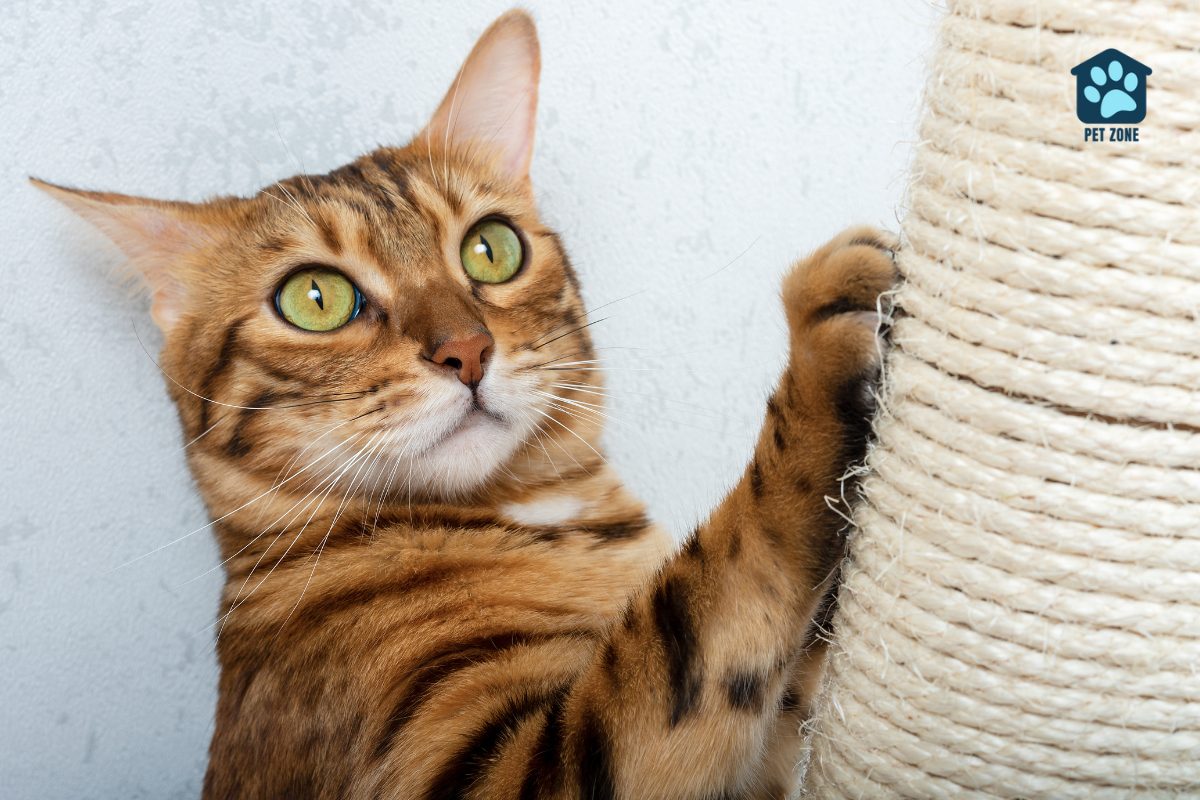
Instinctual behavior
Cats scratch as part of their nature. It is a deep-rooted habit they can’t give up. They got this from their ancestors in the wild. These big cats use scratching to show power and might.
Your pet cat does the same thing, but at home! It’s not about ruining your walls, it’s just how cats are made. So, seeing your cat scratch the wall is normal behavior.
Keeps claws healthy
Cats need to scratch to keep their claws in good shape. This act takes away the dead outer layer of the claw. It helps cats have sharp and clean claws.
Many cat owners see their pets enjoy scratching walls for this reason. They often scratch as a way for them to care for their claws. If you find your cat is scratching the wall, it could be trying to keep its nails healthy.
Marking territory
Cats scratch walls to leave their scent. This act is how they tell other cats, “This place is mine.” It’s a way for your cat to show power over others in the home. A cat may scratch the wall more if there are new pets or people around.
Though it seems strange, this scratching is a natural thing for cats to do. But too much wall scratching might point to problems like stress or sickness in your pet. Make sure your cat feels safe and happy at all times.
Response to stress or boredom
Cats may scratch walls in response to stress or boredom. When cats are feeling anxious or bored, they sometimes engage in destructive behaviors like scratching walls. They do this as a way to release pent-up energy and alleviate their feelings of stress.
Lack of mental stimulation and exercise can lead cats to seek out new ways to entertain themselves, such as scratching walls. If you notice your cat engaging in this behavior, it’s important to provide them with plenty of playtime, toys, and interactive activities to keep them mentally and physically engaged.
The litter box
After using the litter box, a cat might scratch the nearby wall to release scent from their paws, creating a visible sign for other cats that says, “This place is taken!” It’s their way of marking territory.
If the litter box isn’t clean or to their liking, they may scratch the wall out of frustration. Scratching can also serve as a distress signal, a hint that it’s time for a clean-up or a change of litter.
Moreover, the area around a litter box can sometimes be stressful for a cat, especially if it’s too close to where they eat or in a high-traffic part of the house. Scratching the wall helps relieve stress and is part of how they cope with their environment.
Ways to Prevent Destructive Scratching
Trim your cat’s nails regularly, provide alternative scratching surfaces like scratching posts, increase exercise and mental stimulation, and encourage alternative ways of marking territory.
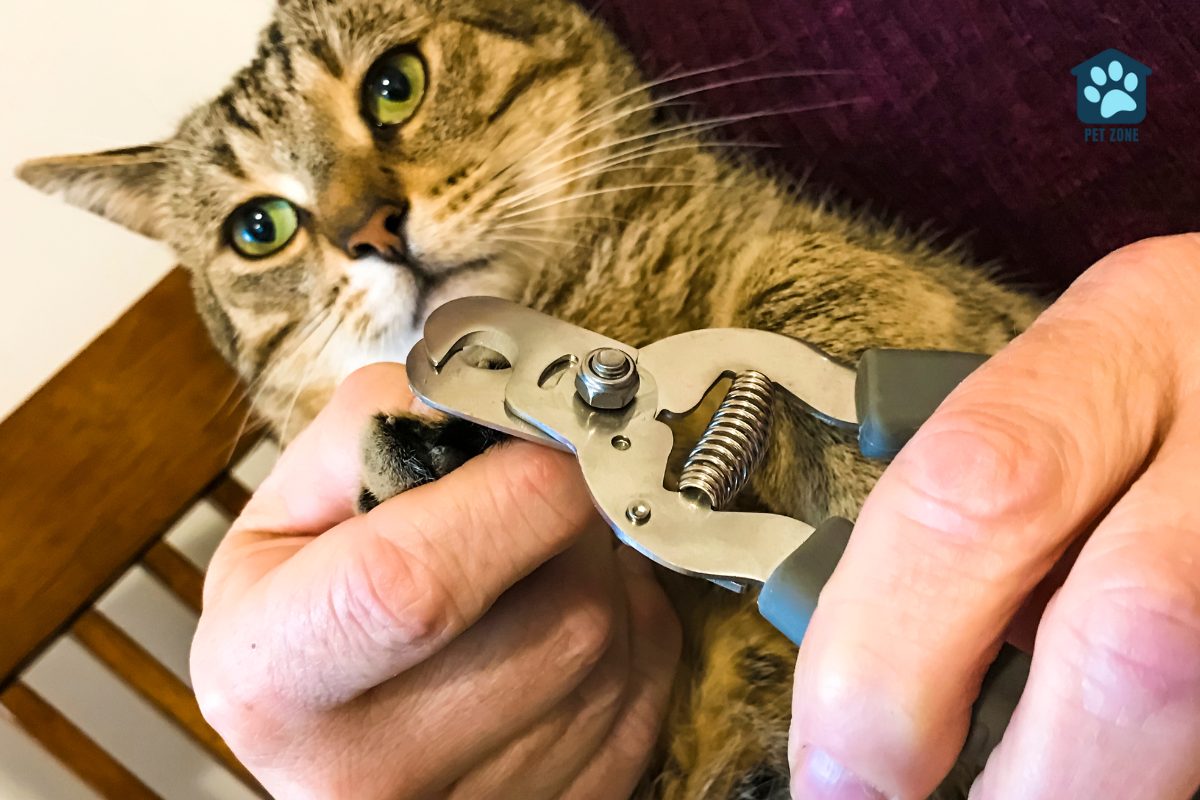
Trim nails regularly
To prevent destructive scratching behavior, it’s important to regularly trim your cat’s nails. Here are some reasons why this is important:
- Trimming a cat’s nails can minimize damage caused by scratching.
- It prevents their claws from getting snagged in carpets, fabrics, and even human skin.
- Regular nail trimming can also help keep your cat’s nails healthy and prevent them from becoming too long and uncomfortable for your cat.
- Accustoming your cat to the nail trimming process can make it easier and stress – free for both you and your pet.
Provide alternative scratching surfaces
To prevent your cat from scratching the walls, you can provide alternative surfaces for them to scratch. Here are some options:
- Scratching posts: Place a few scratching posts around your home, especially near the area where your cat tends to scratch. Make sure the posts are tall enough and sturdy so that your cat can fully stretch and use their claws on them.
- Cat trees: Invest in a cat tree or a climbing tower that has built-in scratching surfaces. This will not only give your cat a place to scratch but also provide them with vertical space to explore and perch on.
- Scratch mats and pads: Get some scratch mats or pads specifically designed for cats. These can be placed on the floor or mounted on walls, providing an inviting surface for your cat to scratch.
- Cardboard boxes: Cats often love scratching cardboard surfaces, so placing a few empty boxes around your home can serve as an attractive scratching option.
- Carpet squares or sisal fabric: Attach carpet squares or sisal fabric securely to a designated scratching area, such as a wooden board or wall panel. This provides another texture for your cat to enjoy scratching.
Increase exercise and mental stimulation
To prevent your cat from scratching the walls, it’s important to increase their exercise and mental stimulation. Here are some ways you can do this:
- Play with your cat regularly using interactive toys or laser pointers. This will help them burn off energy and redirect their focus away from scratching the walls.
- Set up a designated play area for your cat with climbing structures, tunnels, and hiding spots. This will provide them with opportunities for physical activity and mental stimulation.
- Rotate your cat’s toys frequently to keep them engaged and interested. Introduce puzzle toys or treat-dispensing toys to challenge their brain and encourage problem-solving.
- Create a routine of daily play sessions with your cat. This consistency will help satisfy their natural hunting instincts and reduce the need for destructive scratching.
- Consider getting another pet companion for your cat if they are particularly active or prone to boredom. Having a playmate can provide additional exercise and entertainment.
Encourage alternative ways of marking territory
Encouraging your cat to find alternative ways of marking territory is essential in preventing destructive scratching. Here are some effective strategies for achieving this:
- Provide multiple scratching surfaces: Cats have different preferences for the texture and height of their scratching areas. Offer a variety of options such as sisal rope, cardboard scratchers, or carpeted posts to cater to their individual preferences.
- Use interactive toys: Engage your cat with interactive toys that simulate hunting and play. This helps redirect their energy and encourages them to focus on playing rather than scratching walls.
- Use pheromone sprays or diffusers: Pheromone sprays or diffusers emit calming scents that can help reduce stress and anxiety in cats. By creating a soothing environment, it becomes less likely for your cat to resort to destructive scratching as a coping mechanism.
- Play with your cat regularly: Regular play sessions provide mental stimulation and physical exercise for your cat, reducing boredom and anxiety which can lead to excessive scratching.
- Establish designated territories: Designate specific areas for your cat to mark with their scent, such as using vertical scratching posts near windows or entryways. This allows them to express their natural territorial instincts without damaging your walls.
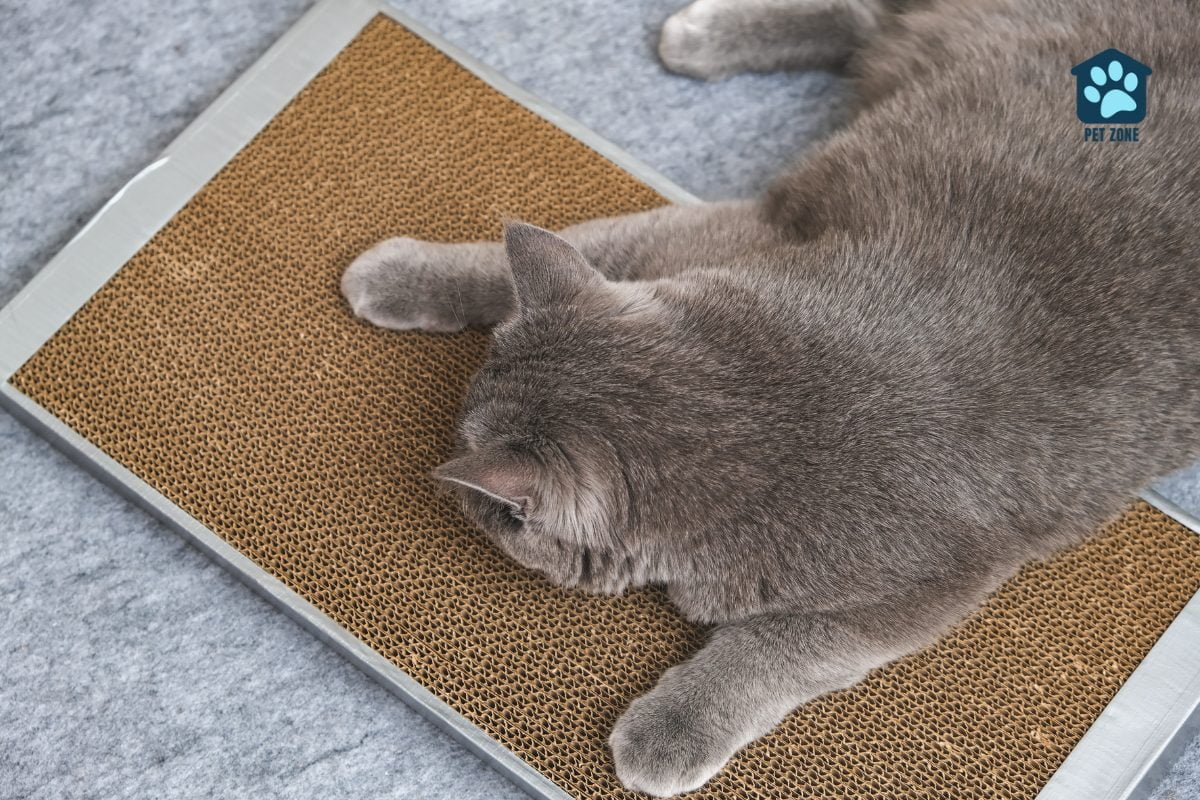
Conclusion
Cats scratch walls for several reasons. It’s a natural behavior that helps them keep their claws healthy and mark their territory. If your cat is scratching the walls, try providing alternative scratching surfaces and addressing any stress or boredom they may be experiencing.
Remember, understanding why your cat scratches can help you find solutions to prevent destructive wall scratching in the future.
As an Amazon Associate I earn from qualifying purchases.
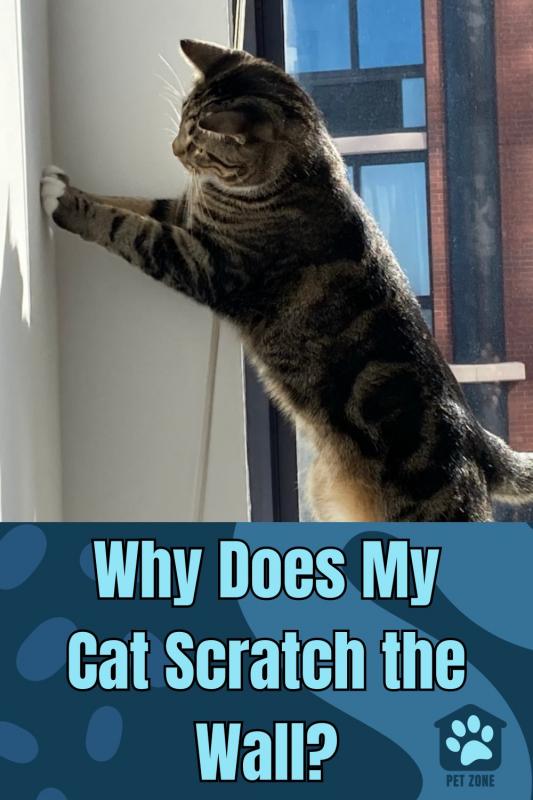


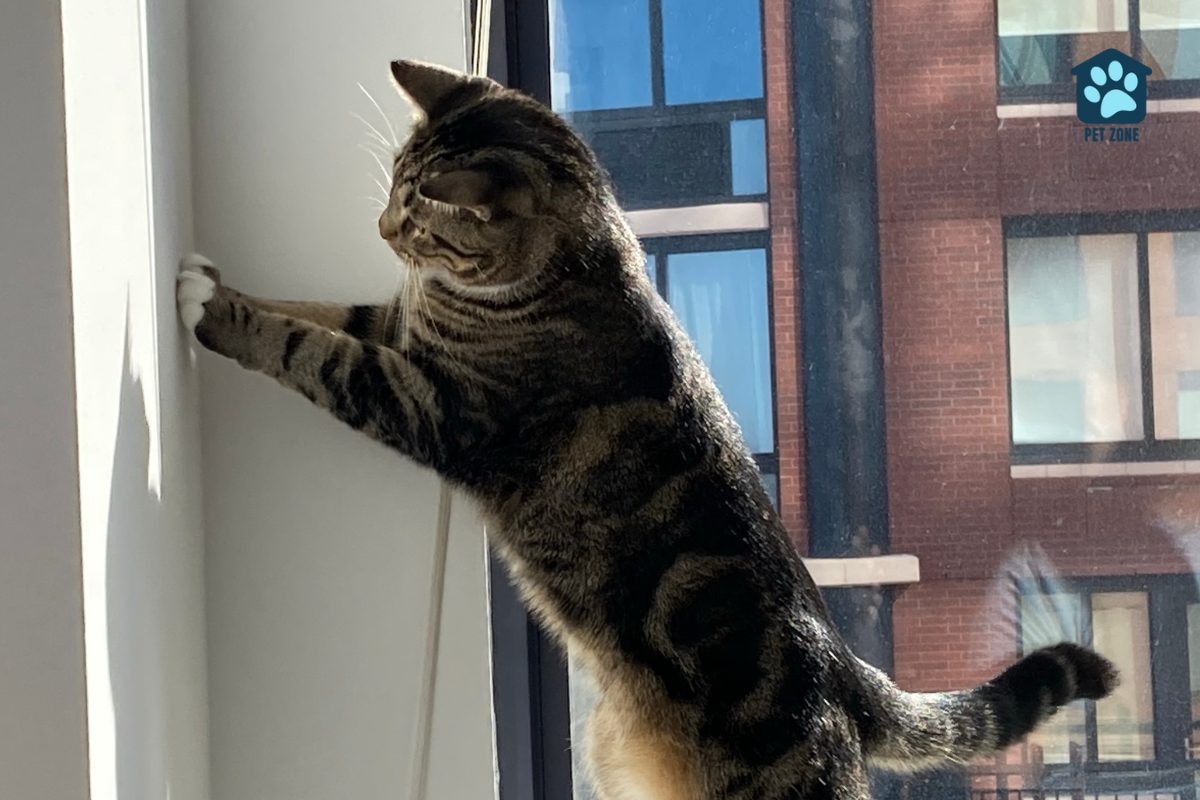
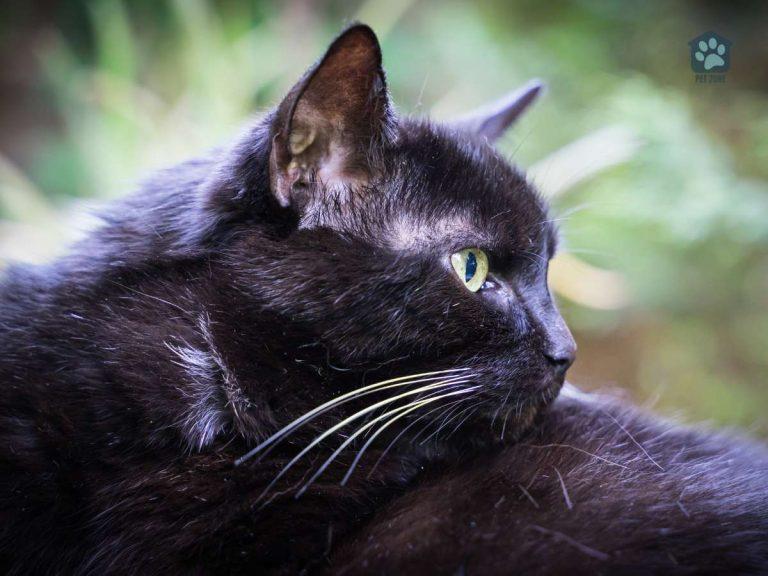

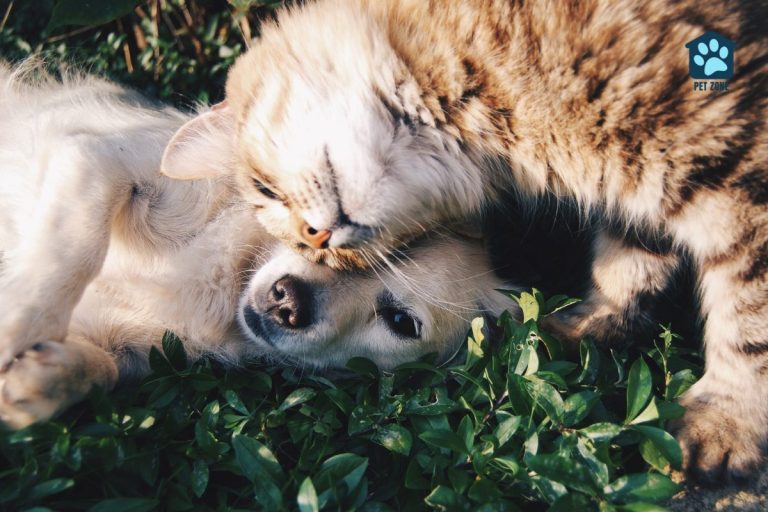


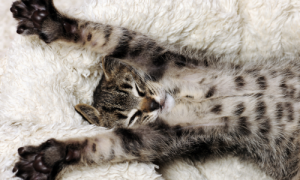
Both of my front declawed cats love to “scratch” at things. I just stare at them like “what are you even doing?” 😛
A cat I was pet sitting would do this – so interesting to learn about this!
wow, what a lovely post about cats. thanks for sharing i will practice those now. hahahah